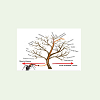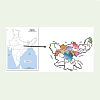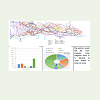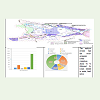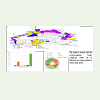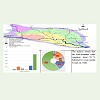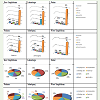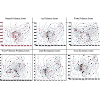Review Article
Issues in Public Hearing Process:Resoving & Redressal Mechanism at Jharkhand
Manoj Kumar1* and Sangeeta1
1Departmet of Environment, CCL, Coal India Limited, D- 304, Sumitra Apartmnet, Donbasco School Road, Hesag, Hatia,Ranchi-834003
Corresponding author: Manoj Kumar, CCL, Coal India Limited, D- 304, Sumitra Apartmnet, Donbasco School Road,Hesag, Hatia, Ranchi-834003, 9431356788; E-mail: mkpatna@yahoo.co.in
Citation: Kumar M, Sangeeta. Issues in Public Hearing Process: Resoving & Redressal Mechanism at Jharkhand. J Environ Soc Sci. 2016;3(1): 122.
Copyright © 2016 Kumar M,et al. This is an open access article distributed under the Creative Commons Attribution License, which permits unrestricted use, distribution, and reproduction in any medium, provided the original work is properly cited.
Journal of Environmental and Social Sciences | Volume: 3, Issue: 1
Submission: 13/06/2016; Accepted: 01/07/2016; Published: 07/07/2016
Abstract
The aim of this article is to give an overview of the concerns of stakeholders by public hearing (PH) process in India and exploring the regional variation amongst different categories along with developing a model for resolving issues. In India process of PH are in practice for more than 28 yrs since 1997 when the law related to PH became effective, with emphasis on those aspects not sufficiently touched upon by most researchers so far. This article focused on the issues raised by stakeholders during the PH Process in different mining sectors in Jharkhand State. Altogether 55 nos. of PH process covering 48nos. of coal mining projects and 22 nos. of non-coal mining projects of the state have been analysed. Based on a literature review, exchanges with EIA practitioners and the author’s daily work on EIA, the issues were categorized and were found that most of issues are related to socio-economic(62%- 79%) in nature followed by land/soil issues(5%-10%) and air pollution(3%- 14%). A model were developed for resolving PH issues for the coal mining projects. This model will also help the environment planners engaged in making EIA studies and EMP formulation as per the desire and wishes of the people residing in and around the project.
Keywords: EIA; Public Hearing/consultation; Stakeholders; PH process
Introduction
EIA notifications detailing the public hearing/ consultationshas been an exercise of the powers conferred by sub-section (1)and clause (v) of sub-section (2) of section 3 of the Environment(Protection) Act, 1986 (29 of 1986) read with clause (d) of sub-rule(3) of rule 5 of the Environment (Protection) Rules, 1986. The EP act,1986 has its mandate in Environmental Impact Assessment (EIA)notifications 1994, 2006 and amended thereon. It ensure compliancein planning and execution of all development activities with theEIA Procedures in order to promote environmentally sound andsustainabledevelopment in the country. This led to implementationof the EIA Procedures in 1994in India. It was an amendment made in 1997 vides which Public hearing was introduced for the first timein India.
This was among other objectives, seeking to provide an avenuefor the involvement of the public, private proponents and agencies inthe assessment and review of proposed undertakings. This is to ensurethat the concerns and needs of the affected population are consideredand addressed. The various actors involved in Public hearing (PH)process (Figure 1) Project Proponent, State pollution control Board, Public, Environment Consultant and Impact assessment agency.
Project Proponent (PP): The PP gets EIA study done and EMP prepared by on its own or by consultant on the basis of approved Project report. The PP has to approach the concerned SPCB for No Objection Certificate (NOC) and holding the public hearing.
Public/stakeholder: Public/Stakeholder puts on their stake/ concern over the upcoming projects through PH process by attending PH venue. They can submit their concerns directly to SPCB by various communicating means in writing. Nowadays their concerns are also taken seriously by EAC, an expert committee constituted by MoEF.
Environmental consultant: The Environment consultant prepares EMP on the basis of existing legal and procedural requirements for the project proponent and does all technical quarry on behalf of PP. The IAA (Ministry of Environment & Forest and SEIA) accepts consultant to be accredited with NABET.
State pollution control board: SPCB’s hold public hearing as perthe provisions of EIA Notification and forward its details to IAA.
Impact assessment agency: The IAA through its EAC/SEAC will evaluate and assess the PH issues during evaluation of the EIA report.
Thus Public Hearing provides a legal space for people of an area to come face-to-face with the project proponent and government and express their concerns.
Scope of this study
In India process of PH are in practice for about 29 yrs since 1997.The different aspects in the PH process have not been sufficiently touched upon by most researchers so far. This paper attempts to analysethe issues raised in 55 nos. of PH process covering 48nos. of coal mining projects and 22 nos. of non coal mining projects of Jharkhand state. Based on a literature review, exchanges with EIA practitioners and the author’s regular work on EIA, analysis have been made for the issues raised in PH process for brown as well as green field projects, UG as well as opencast project, mining and non-mining projects and coal mining and non coal mining projects. Analysis has been made on the basis of issues categorizing developed and framed in the study made by Kumar, M (2015). The various issues raised during public hearing or public consultations have been categorized and classified as Physical and socioeconomic issues. These issues have been broadly classified into Issues related to General, Air, Water, Noise/Vibration, Land/Soil and Socio-economic (V 2) [Figure 2].
Case Study
The PH issues covered are from the mining projects related to Bauxite, Laterite, CBM, Coal, China clay, Copper, Graphite, Iron, Lime stone, Manganese, Sand, Sand stone, Steel, Stone mines/quarry falling in 13 districts of Jharkhand.
Mining and Non-Mining Sectors
On analyzing the issues from mining and non-mining sectors socioeconomic issues seems to vary between 62%- 79%. Figure 3 shows the graphical relationship of different issues.
The Coal resources of Jharkhand are available in older GondwanaFormations of peninsular India The coalmining sectors in Jharkhandare spread over Jharia coalfields, East Bokro Coalfields, West Bokatocoalfields, Giridih or Karharbari Coalfield, North KaranpuraCoalfield, South Karanpura Coalfield, Ramgarh Coalfield, HutarCoalfield, Daltenganj Coalfield, Deoghar Coalfields, Mugma coalfield,Hura Coalfields. Analysis for the mining projects falling in differentcoalfields are presented in Figures 4-10.
District Wise Analysis
The different issues raised during different PH processes held in different time for different industries were grouped into three categories depending upon availability of data and ease of analysis.The different groups are:
1. Districts involving PH issues related to both coal and noncoalmining industries.
2. Districts involving PH issues related to Coal mining industriesonly.
3. Districts related to non-coal mining industries.
Coal and Non-Coal Mining Industries
On the basis of available PH issues Bokaro, Dhanbad, Hazaribagh and Ranchi districts of Jharkhand falls under this category. Thepattern of issues varies slightly from district to district.
The issues related to air, water after socio economics wereprominent in Bokaro district (Figure 11). The socio-economic issues vary between 52% - 84% in coal mining when compared to non coal mining cases with over all of 56%.
75% of issues of coal mining areas were related to socio-economicswith an overall values of 73%. But the pattern in non-coal miningareas seems to different at Dhanbad districts (Figure 12). The issues related to air, water, land and socio-economics were 21%, 14, 18% & 43% respectively.
The issues related to air, noise after socio economics wereprominent in Hazribagh district (Figure 13) for both coal and noncoal mining areas. Most of the issues were related to socio-economic issues (58%). All the issues like employment, compensation, drinking water, electricity, health, CSR, fly-ash & education are having equal contribution.
The issues at Ranchi districts have similar pattern as of Bokarodistrict (Figure 14).
Coal mining industries Only
Due to non-availability of non-coalmining data PH proceedingsanalysis for Chatra, Godda and Ramgarh districts of Jharkhand(Figure 15) were made for coal mining areas only. In all the three districts falling under in this category the socio-economic issues varies from 49%-58%. Apart from these issues related to air pollution and land reclamation was prominent contributing to the extent of 21%. The people of Godda were more concerned of electricity and raising their voice for health contributing to 43% & 30% respectively. Employment, compensation and drinking water were otherprominent issues.
Non Coal mining industries Only
There are some districts where there is no coal mining activity or due to the non-availability coal mines PH proceedings analysis fornon coal mining areas were made. The different districts falling underthis category were East Singhbhum, Lohardaga, Pakur, Palamu,west singhbhum and sahebganj (Figure 16). The socio-economic issues ranges from 70% to 94%. Amongst the socio-economic issues employment, health and drinking water issues were prominent. Theissues related to CSR were of main concern in each of the districtwith 16%, 14%, 10%, 23%, 8% & 14% for East Singhbhum, Lohardaga,Pakur, Palamu, Sahebganjand West Singhbhum districts respectively.
Extent of Issues in Different Districts
Analysis for the issues pertaining to PH process for coal mineswere conducted in order to find their extent in different districts ofJharkhand state. Study were restricted to the PH conducted in coalmines of different coal companies falling in different districts of Jharkhand, In this study the issues raised were mapped over the stateand associated district.
The contour maps shown at Figures 17,18 represents the extent and spreading different issues raised in the PH conducted in coal mining areas clearly revels the area of intervention for the coal minesmanager.
The issues related to air, water, noise, land/soil, socio-economicare maximum at Ramgarh, Dhanbad, Dhanbad, Ramgarh, Ramgarh districts respectively. On analyzing the socio-economic issues in details, it were found that the issues related to employment, compensation, drinking water, Electricity, health, CSR, fly-ash, education were maximum in Dhanbad, Ramgarh-Dhanbad, Dhanbad, Dhanbad, Ramgarh, Ramgarh, Dhnbad, Bokaro, Dhanbad districts respectively. The redressal activities will depend upon the concentration of contour and its extent for different activities related to certain issues. This will certainly help them in solving the PH issues raised.
Conclusion
The model so developed will help in understanding the sentimentsof the people residing in and around the project and concentratingthe areas of intervention they requires in solving their issues. Thismodel also depicts the location and area of intervention Jharkhanddistrict issues wise. This will help the mines manager in makingstrategic planning before the PH process. This model will also savethe environment planners engaged in making EIA studies and EMPformulation as per the desire and wishes of the people residing in andaround the project. This will not only help the project proponent inearly submission of EMP after incorporating the issues raised in PHprocess, but also help the EAC/SEAC. This in turn will help ImpactAssessment Agency (MoEF/ SEIAA), in evaluating the PH issueswhile considering the proposals in efficient manner. This will furtherenhance the efficiency of the agency responsible (SPCB / any otheragency entrusted by IAA) for arranging and conducting PH process.Above all if the PH process is completed smoothly, it saves time &money for all actors involved in PH process. The analysis undervarious spectrum will aid the management in resolving the issues insustainable manner as the issues has roots in its own people, culture,soil and heritage rather than the glamour of the others.
Acknowledgement
Authors are thankful to all management trainee of Environmentof coal India limited attended training at IICM and all others forrendering their help both onsite and offsite. Valuable suggestionand guidance rendered by executives of Environment & ForestDepartment of Central Coalfields Limited are acknowledged. Thehelp rendered by people from CMPDI, Ranchi in developing the model is also acknowledged. The views presented by author is solelyauthor’s interpretation.
References
- Canter LW (1996) “Environmental Impact Assessmentâ€, McGraw-Hill Education (ISE Edi, Internat.2r.e. edition.
- Environment Ministry publishes (2006) Compendium of Gazette Notifications, Office Memoranda Under Environment Impact Assessment Notification, MoEF&CC, Nov-2014: 389-398.
- Effective implementation of EIA Notification - Public hearing, circular no. MPCB/RO(HQ/B-4289.
- Hosetti BB, Kumar A (2014) Environment Impact Assessment and Managementâ€, Daya Publishing House, India: pp 1-16.
- Manoj K [2015] “Public hearing in EIA Process-A platform for raising Environmental issuesâ€; Vasundhara- The Earth, Special Volume 1, IJNEAS, ISSN : 2349-3763; October 2015, pp. 46-59.
- Public hearing on Environment and Development, People’s Commission of Environment & Development, India, New Delhi, 1995.
- Kabir SMZ, Momtaz S [2013] “Fifteen Years Of Environmental Impact Assessment System In Bangladesh: Current Practice, Challenges And Future Directionsâ€, Journal of Environmental Assessment Policy and Management 15: 30.
- Appiah-Opoku S, Bryan HC (2013) EA follow-up in the Ghanaian mining sector: Challenges and opportunities. Environmental Impact Assessment Review 41: 38-44.
- Fischer TB, Jha-Thakur U, Hayes S [2015] Environmental Impact Assessment and Strategic Environmental Assessment Research In The UK. J Env Assmt Pol Mgmt17: 12.
- http://ccl.gov.in/intiatives/env_frst.htm
- http://envfor.nic.in/legis/eia/so1533.pdf
- http://environmentclearance.nic.in/writereaddata/PublicHearing.
- http://environmentclearance.nic.in/writereaddata/EIA/09122014OHPGECZDEMPText.pdf
- http://hspcb.gov.in
- http://mpcb.gov.in/notices/pdf/Junad_MinutesWesterncoalField.pdf
- https://www.coalindia.in/en-us/company/aboutus.aspx
- http://www.easterncoal.gov.in/notices/environment/20150918rajmahalsmcr.pdf
- http://www.energydigital.com/top10/3790/Top-10-Coal-Producing-Countries-in-the-World
- http://www.moef.nic.in/circulars
- http://www.ppcb.gov.in/Attachments/publicHearing
- http://www.rpcb.rajasthan.gov.in/rpcbweb/envis.html
- http://www.scclmines.com/env/docs/ECS/kalyanikhani OCP.pdf
- http://www.uppcb.com
- http://www.wbpcb.gov.in/writereaddata/files/ecl_cl11_p_h.pdf


